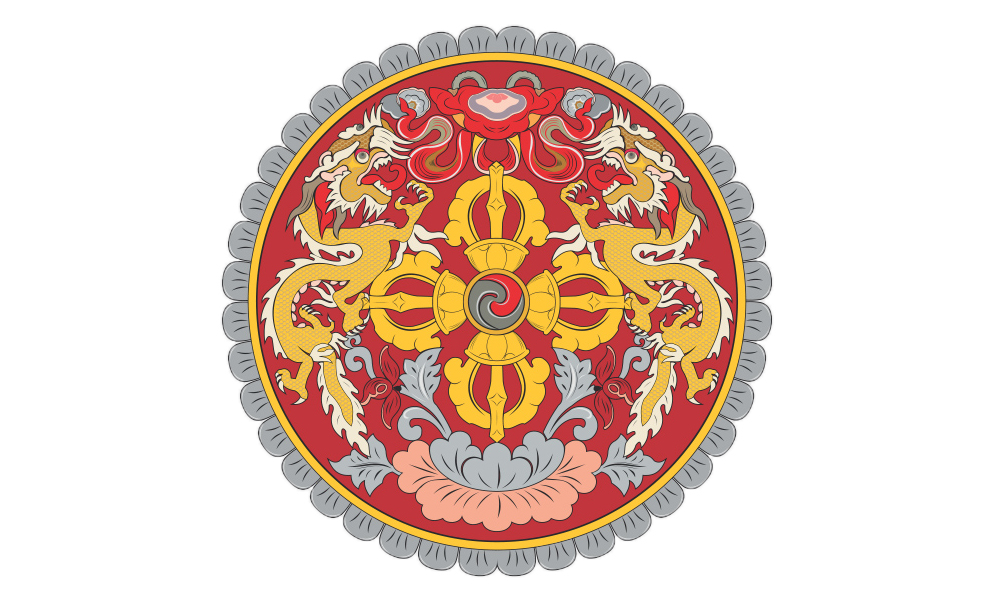
The National Emblem of Bhutan is a circle composed of a double diamond thunderbolt placed above a lotus. The thunderbolt represents harmony between secular and religious power while the lotus symbolizes purity of the nation. The jewels signifies sovereign power, and the two dragons (male and female) represents name of the country, “Druk – Yul” – the Land Of The Thunder Dragon.
Located below the main town, near the Wang Chhu River, Thimphu’s weekend market is by far the largest domestic market for the farmers in Bhutan. Farmers come from all over the country to sell their farm products in the market. With its wide assortment of fresh and organic produce, the Farmer’s Market has become a favourite spot for tourists and a recreational place for people from all walks of life. Across a cantilever footbridge, Kuendeyling Bazaam, to the west bank is a collection of stalls selling clothing, textiles and handicrafts.
From the dusk till the dawn, farmers works with dedication in his farm land filled with arrays of vegetable varieties. In Bhutan main source of income for farmers are from field produce like potato, cardamom, orange, apple and green vegetables ready to market. Farmer has to survive with whatever is grown from his land. And today, he has bright face since government has been supporting our farmers in various ways.
Thimphu, Bhutan’s capital, occupies a valley in the country’s western interior. In addition to being the government seat, the city is known for its Buddhist sites. The massive Tashichho Dzong is a fortified monastery and government palace with gold-leaf roofs. The Memorial Chorten, a whitewashed structure with a gold spire, is a revered Buddhist shrine dedicated to Bhutan’s third king, Jigme Dorji Wangchuck. People here are humble and hardworking. The day start with energetic sweepers making the street clean keeping Thimphu well clean. One rushing with fast pace towards respective office Nearby Wangchu River noisy super market where Bhutan produce...